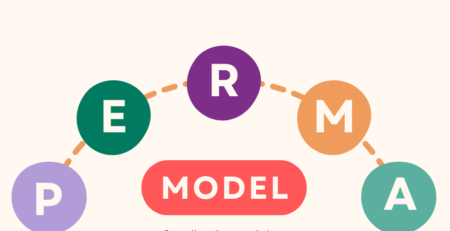Gender identity development is complex, personal, and unique to each individual. For some, it’s a smooth trajectory that aligns with their sex assigned at birth. For others, it’s a winding path of questioning, exploration, and discovery.
As a parent, you may notice your pre-teen or early adolescent child expressing curiosity about gender. They may ask questions, explore different forms of dress and expression, or even state that the gender identity they were assumed to be doesn’t quite fit.
This exploration is developmentally appropriate and a healthy part of self-discovery in the pre-teen years. However, this moment can stir up complex emotions. You likely have many questions and uncertainties about how to best support your preteen during such a vulnerable time of gender exploration and self-discovery.
First and foremost, it’s important your child feels seen, heard and loved for exactly who they are. While you may need time and education to fully understand what they are experiencing, demonstrating unconditional acceptance paves the way for honest conversations and a deeper parent-child connection.
Defining Key Terms and Concepts
Here are some different words people use when talking about gender identity:
Gender identity – A person’s inner sense of being male, female, both, neither or another gender. This identity can correspond with the sex assigned at birth or differ from it.
Gender expression – The outward communication of gender through names, pronouns, clothing, hairstyles, voice, behaviors and interests. This may or may not conform to social expectations.
Sexual orientation – Who a person is emotionally, physically and romantically attracted to, which is distinct from gender identity.
Cisgender – When gender identity aligns with the sex assigned at birth.
Transgender – When gender identity differs from the sex assigned at birth.
Non-binary – A gender identity that is neither exclusively male nor female. May be a blend or somewhere in between.
Gender expansive – Expressing gender in ways that broaden (or expand) the social norms for gender expressions and identities.
Gender fluid – Moving flexibly between gender identities and expressions.
Gender dysphoria – Distress experienced when gender identity and sex assigned at birth do not match.
Why Gender Exploration Emerges in Adolescence?
The adolescent years mark a time when children begin consciously questioning their identity and place in the world. Their sense of self is rapidly evolving. Puberty introduces major bodily changes, along with new social dynamics, relationships and emotions.
During this “tween” stage, curiosity about gender identity often surfaces as kids try to make meaning of themselves in relation to social messages about gender roles and norms. Reasons this self-inquiry emerges include:
– A growing desire for autonomy and individuation.
– Cognitive maturity for introspection about who they are and want to be.
– Learning about social constructs and power structures.
– Observing gender norms and stereotypes in the media.
– Processing bodily changes from puberty.
– Expanding social relationships and weighing peer perceptions.
– Seeking a sense of belonging within peer groups.
Some adolescents will explore gender but conclude their assigned gender at birth feels right. Others will continue questioning and describing their gender identity or expression in ways that expand beyond the binary of male/female.
There is no “normal” timeline. Some kids articulate being transgender or gender diverse at very young ages. For others, gender identity questioning unfolds gradually across childhood. Exploration can also continue developing during the teen years and into adulthood.
Challenges and Opportunities in Gender Exploration
Gender exploration can present challenges, both for young individuals and their families. They may grapple with feelings of depression and disconnection if their gender identity does not align with societal expectations. Therapists must be attuned to the possibility of gender exploration serving as a therapeutic distraction, and work to help students differentiate between fear-based attachment and authentic self-discovery.
The process of questioning one’s gender identity can have a significant impact on mental well-being, especially for young adolescents. The pressure to find the right label or pronouns, as well as feelings of invalidation from others, can contribute to this. People may try to impose their own ideas of who the adolescent is or insist that they must conform to the sex assigned at birth. They may also judge the adolescent’s gender based on their assumptions about them. It’s important for young adolescents to remember that gender identity is personal and not determined by others’ opinions.
During the exploration of gender identity, young adolescents may experience a lack of confidence in their appearance. They might grapple with negative thoughts about their image, wondering if they look too feminine or masculine, and questioning their clothing choices or posture. Over time, it’s crucial for them to realise that they don’t need to conform to any specific appearance for their identity to be valid. Embracing their true gender identity should bring them comfort, and they should understand that their gender identity is about how they see themselves, not how others perceive them. They are who they are, and that is something no one else can define for them.
Creating an Affirming Environment as a Parent
When your adolescent shares they are exploring their gender identity, avoid judging, dismissing or discouraging their expression. For parents, navigating conversations about gender can be daunting, especially if they did not grow up in a community where gender and sexuality were openly discussed. However, these conversations present an opportunity for parents to deepen their understanding of their children and create a supportive environment for discussing other aspects of identity.
Here are ways to nurture gender exploration:
– Educate yourself using reliable resources like Headspace, Reachout, Gender Centre, Wear it Purple, Minus18, QLife, and Kids Helpline. Understanding terminology and experiences helps you remain calm.
– Ask open-ended questions and actively listen without judgment. Let your child direct the journey at their pace.
– Affirm there is no one way to be a boy, girl or any gender. Encourage them to be uniquely themselves.
– Allow freedom of gender expression at home through clothes, hairstyles, activities and interests. Don’t force conformity.
– Reflect on your own biases and assumptions about gender. Be careful not to project them onto your child.
– Speak up if you witness teasing or bullying of gender-expansive peers. Model inclusivity.
– Connect your child with communities, events and media featuring diverse gender representations.
– Use your child’s name and pronouns consistently, even if you need time to fully adjust. Your validation matters deeply.
Seeking Added Support from a Therapist
In addition to fostering a safe environment at home, a gender-affirming therapist can further support your preteen’s exploration with compassionate care.
Benefits a therapist provides include:
– Consistent reinforcement that curiosity around gender identity is healthy and brave.
– Guiding inward reflection about motivations and influences underlying their gender questioning.
– Assessing potential impacts of trauma, anxiety, depression or family/peer dynamics on gender exploration.
– Building critical thinking skills to unpack gender norms and stereotypes observed in society.
– Coaching on responding to teasing or questioning from peers and relatives.
– Collaborating on compromises if transitioning names, pronouns or expressions causes family friction.
– Discussing when and how to come out to different groups – friends, school, family, etc.
– Monitoring emotional well-being and psychological risks like self-harm during the ups and downs of exploration.
Ongoing affirmation from parents, paired with the safe space a therapist offers, allows for thorough introspection into gender identity. There is no set outcome. The goal is lived authenticity, not fitting into any box.
What matters most is conveying unwavering love and support as your child navigates this journey to discover their inner truth. While the path includes unknowns, your relationship provides the security needed to explore with self-awareness and courage.
Trusting the Journey
Witnessing your child’s question and expanding their understanding of gender can ignite many emotions. But above all, have faith this process will guide them to wholeness.
Allowing space for gender identity to unfold organically, at a timeline that’s right for your child, is a gift. It empowers them to listen within, live authentically and own their story, rather than conforming to societal expectations. This ability to honour their inner voice will serve them well into adulthood.
No matter where your child’s road of gender exploration leads, keeping your relationship rooted in unconditional love provides the nurturing foundation all children need to bloom into their best selves.














